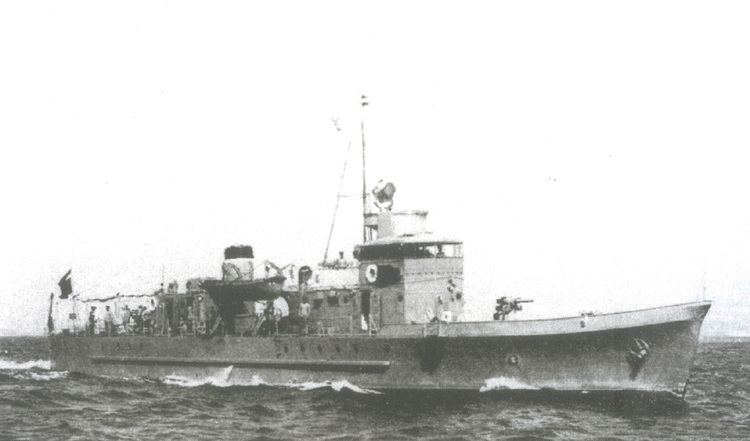Commander in Chief Emperor Pu Yi | Type Navy | |
 | ||
Active 15 April 1932 – November 1939 Branch Manchukuoan Armed Forces Role Coastal and river defense. Similar Manchukuo Imperial Army, Kwantung Army, Republic of China Navy, Second Army, Beiyang Army | ||
The Manchukuo Imperial Navy (Chinese: 満州帝國海軍 Mǎnzhōu Dìguó Hǎijūn) was the navy of the Japanese puppet state of Manchukuo. As Manchukuo had very little coastline, the leadership of the Japanese Kwantung Army regarded the development of a navy to have a very low military priority, although it was politically desirable to create at least a nominal force as a symbol of the legitimacy of the new regime.
Contents
History
When the Imperial Japanese Army invaded Manchuria in 1931, they were accompanied by a detachment from the Imperial Japanese Navy (IJN), which provided for coastal defense. However, the main naval requirement for Manchuria was the defense of its extensive border river system with the Soviet Union. Immediately after the Manchurian Incident of 1931, Kuomingtang Northeastern Navy Vice-Minister Shen Hung-lieh and Fleet Commander Hsien Kung-che deserted their posts. Local Kuomintang commander Captain Yin Tsu-Ch'ien met with Japanese forces and agreed to turn over his fleet of five river gunboats to the Imperial Japanese Navy in Harbin on 15 February 1932. This flotilla formed the core of the Sungari River Defense Fleet (江防艦隊) under the State of Manchuria.
The Manchukuo Imperial Navy was established on 15 April 1932, by the proclamation of the "Manchukuoan Armed Forces Act" by Emperor Pu Yi, who also assumed the role of supreme commander. The flagship of the fleet was the destroyer Hai Wei, formerly the Kashi, a Momo-class destroyer of the Imperial Japanese Navy. However, coastal defense for Manchukuo remained largely in the hands of the IJN 3rd China (North) Fleet.
The Sungari Fleet was active on the Sungari, Amur and Ussuri rivers from 1933, and received additional gunboats from Japan. However, it proved hopelessly inadequate during the Pacification of Manchukuo, and the Japanese instituted numerous training programs in an attempt to raise its capabilities. Reserve or retired Japanese officers were assigned to the Sungari Fleet, and Manchukuo cadets were sent to study navigation and gunnery at the Imperial Japanese Navy Academy.
In November 1938, IJN units were withdrawn from Manchukuo, ostensibly because the training levels of the Imperial Manchukuo Navy had risen to acceptable levels, but in reality because of the ongoing political conflict between the Japanese army and navy over who had control over Manchuria. In November 1939 the navy came under the control of the Manchukuo Imperial Army, and was renamed River Force (江上軍).
In 1942, most of the remaining Japanese personnel serving with the River Force were also withdrawn. As half of its officer class was Japanese, this left a huge gap in capabilities and the performance of the River Force deteriorated rapidly. Many ships became inoperable, and their anti-aircraft guns were demounted and used in land-based operations. At the time of the Soviet invasion of Manchuria, the River Force was completely unready for combat, and disintegrated in face of the overwhelmingly superior Soviet forces.
Coastal Defense Forces
Manchukuo Navy River Defense Patrol
Manchukuo Imperial Navy land units
The Manchu Imperial Navy land units were formed from Japanese and Manchu crews, together with Manchukuo security naval police. They were charged with watching ports and naval bases, and guarding dams. Organized into two units of 500 men each, they were armed with light weapons and machine guns.
